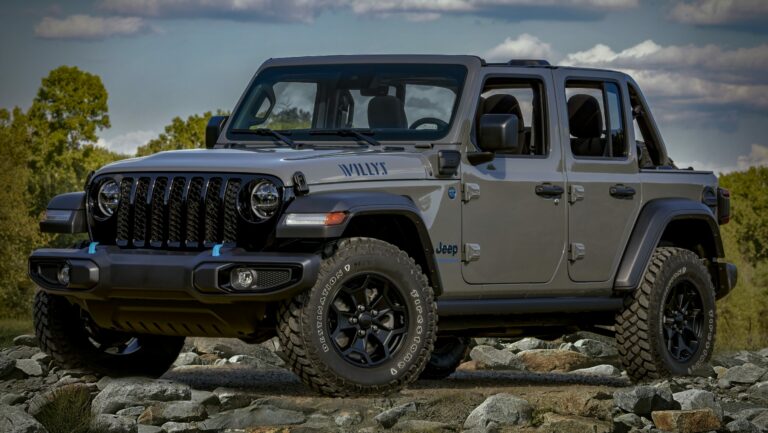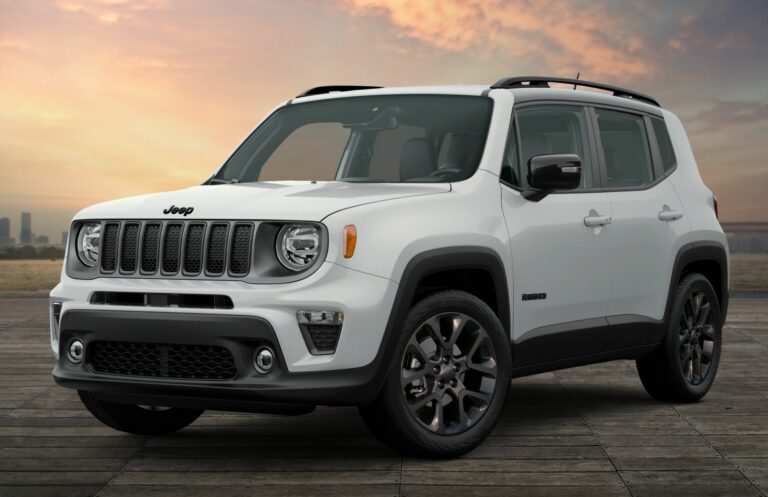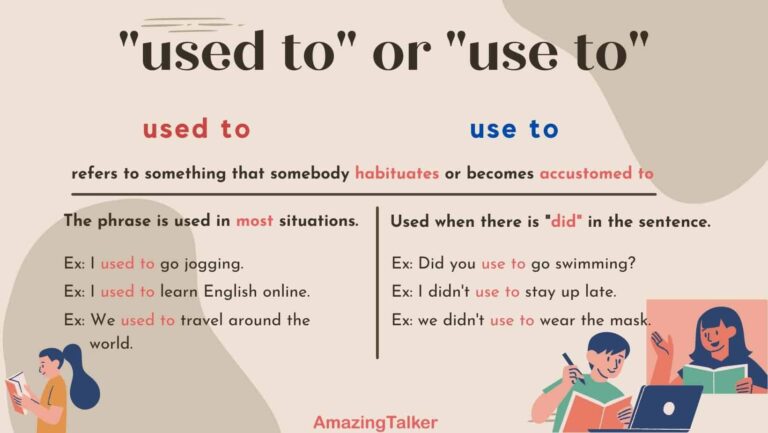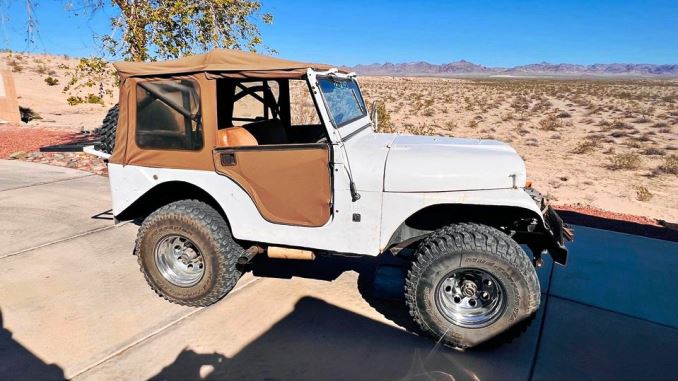1955 Jeep For Sale: Your Comprehensive Guide to Owning a Timeless Legend
1955 Jeep For Sale: Your Comprehensive Guide to Owning a Timeless Legend jeeps.truckstrend.com
The phrase "1955 Jeep For Sale" isn’t just a simple classified listing; it’s an invitation to own a piece of American automotive history, a rugged icon that helped define a generation and continues to captivate enthusiasts worldwide. In 1955, Willys-Overland, by then under Kaiser Motors’ ownership, introduced what would become arguably the most recognizable and enduring civilian Jeep model: the CJ-5. This year marked a significant transition, blending the proven utility of its military predecessors with enhanced civilian comforts and capabilities. For collectors, off-road adventurers, and vintage vehicle aficionados, finding a 1955 Jeep for sale represents an opportunity to acquire a robust, charismatic, and undeniably cool machine that stands as a testament to simplicity and durability. This comprehensive guide will navigate you through everything you need to know about purchasing and owning one of these remarkable vehicles.
The Enduring Legacy of the 1955 Jeep: Why It Stands Out
1955 Jeep For Sale: Your Comprehensive Guide to Owning a Timeless Legend
The 1955 Jeep, predominantly the CJ-5 model (though some CJ-3B "high-hood" models were still produced), represents a pivotal moment in the Jeep lineage. Building on the foundation of the legendary military MB and civilian CJ-2A/CJ-3A/CJ-3B, the CJ-5 offered a slightly longer wheelbase, updated styling, and improved seating, making it more appealing for civilian use while retaining its legendary off-road prowess. Powered by the reliable "Hurricane" F-head four-cylinder engine (an evolution of the "Go Devil" flathead), the CJ-5 delivered robust low-end torque, perfect for traversing challenging terrain or working on the farm.
What makes a 1955 Jeep for sale so desirable today? Beyond its nostalgic appeal, these vehicles boast a simple, mechanical design that is surprisingly easy to maintain and repair, even for novice mechanics. Their open-top, minimalist design evokes a sense of freedom and adventure that modern vehicles often lack. Whether you envision it as a weekend cruiser, a capable trail rig, or a show-stopping restoration, the 1955 Jeep offers a unique blend of heritage, utility, and timeless cool that few other vehicles can match. It’s a symbol of American ingenuity and rugged individualism, making it a highly sought-after classic.
What to Look For When Buying a 1955 Jeep
When you’re searching for a "1955 Jeep for sale," a thorough inspection is paramount. These vehicles are nearly 70 years old, and their condition can vary wildly. Here’s a detailed checklist of what to scrutinize:
- Rust: This is the ultimate killer of vintage Jeeps. Pay close attention to the frame (especially near spring hangers and body mounts), floorboards, hat channels under the floor, fender wells, and the body tub itself. Surface rust is manageable, but deep, structural rust requires extensive and costly repair.
- Engine and Drivetrain: The original "Hurricane" F-head engine is robust but check for excessive smoke (blue for oil, white for coolant), strange noises, oil leaks, and proper compression. Test the transmission (typically a T-90 3-speed manual) for smooth shifting and listen for grinding. Engage the transfer case (Dana 18) into both 4-high and 4-low to ensure it functions correctly. Check the axles (Dana 25 front, Dana 44 rear were common) for leaks and unusual noises.
- Suspension and Steering: Examine leaf springs for sagging or broken leaves. Check shackles, bushings, and shock absorbers for wear. Look for excessive play in the steering wheel, which could indicate worn steering box components, tie rods, or drag links.
- Brakes: These Jeeps typically came with manual drum brakes. Test their effectiveness and look for leaks at the wheel cylinders or master cylinder.
- Electrical System: Many older Jeeps have been converted from their original 6-volt system to a more modern 12-volt system. Ensure all lights, gauges, and the starter motor function correctly. Inspect wiring for fraying, splices, or poor connections.
- Originality vs. Modifications: Decide whether you want a historically accurate, unmolested example or a modified rig. Originality often commands a higher price for collectors. Be wary of poorly executed modifications like engine swaps, lifts, or shoddy bodywork, as these can create more problems than they solve.
- Documentation: A clear title is essential. Any available service records, restoration receipts, or historical documents add significant value and peace of mind.

The Buying Process: Navigating the Market for a Vintage Jeep
Acquiring a 1955 Jeep for sale requires a strategic approach, blending patience with decisive action.
- Where to Look:
- Online Marketplaces: Websites like eBay Motors, Hemmings, Bring a Trailer, ClassicCars.com, and dedicated Jeep forums are excellent starting points.
- Specialist Dealers: Some classic car dealers specialize in vintage Jeeps. While prices might be higher, these vehicles often come with a degree of pre-inspection and sometimes even a limited warranty.
- Auctions: Live and online auctions can offer great deals, but due diligence is even more critical as "as-is" sales are common.
- Classic Car Shows & Clubs: Networking with local Jeep clubs or attending classic car shows can uncover private sales and valuable insights.

- Setting a Budget: Beyond the purchase price, factor in transportation costs, immediate repairs (even for "running" vehicles), potential restoration expenses, registration, and classic car insurance. Be realistic about what you can afford for the vehicle itself and the subsequent investment.
- Pre-Purchase Inspection (PPI): If possible, hire an independent mechanic specializing in vintage vehicles or Jeeps to perform a PPI. Their expert eye can spot issues you might miss and provide a professional assessment of the vehicle’s true condition.
- Test Drive: Always test drive the Jeep. Listen for unusual noises, feel for vibrations, check steering play, and test the brakes and all four-wheel-drive modes.
- Negotiation: Be prepared to negotiate. Knowing the vehicle’s flaws (from your inspection) gives you leverage. Don’t be afraid to walk away if the price isn’t right or the seller is unwilling to budge on significant issues.
- Transportation and Registration: Plan how you’ll get the Jeep home. Many older Jeeps aren’t suitable for long highway drives immediately after purchase and may require professional transport. Research your local Department of Motor Vehicles requirements for titling and registering a vintage vehicle.
Ownership & Maintenance: Keeping Your 1955 Jeep Alive
Owning a 1955 Jeep is a rewarding experience, but it comes with responsibilities. These machines thrive on regular maintenance.
- Common Issues: Be prepared for things like oil leaks (especially from the transfer case and differential seals), carburetor adjustments, occasional electrical gremlins (especially if it’s still 6-volt), and wear on suspension components. Rust prevention is an ongoing battle.
- Parts Availability: Surprisingly, parts for the CJ-5 are relatively abundant. Due to the long production run of the CJ series and the commonality of many components (Dana axles, T-90 transmission), aftermarket suppliers and specialist vintage Jeep parts dealers stock a wide range of reproduction and NOS (New Old Stock) parts. Forums and online communities are great resources for finding specific or rare items.
- DIY vs. Professional: The simplicity of the 1955 Jeep’s mechanics makes many repairs and maintenance tasks accessible to the average DIY enthusiast. However, complex engine rebuilds, extensive bodywork, or intricate electrical issues might be best left to experienced professionals.
- Community Support: Joining a local or online Jeep club is invaluable. The collective knowledge of fellow owners can help you troubleshoot problems, find parts, and even offer hands-on assistance.
- Insurance: Look into classic car insurance policies, which often offer better coverage and rates for vintage vehicles than standard auto insurance, recognizing their limited use and appreciation in value.
Types and Categories of 1955 Jeeps
While "1955 Jeep for sale" most commonly refers to the CJ-5, it’s worth understanding the nuances:
- Willys CJ-5: This is the quintessential 1955 Jeep. It was introduced this year, featuring a more modern body and a slightly longer wheelbase than its predecessors. Most will have the "Hurricane" F-head four-cylinder engine.
- Willys CJ-3B: While the CJ-5 was new, the "high-hood" CJ-3B was still in production in 1955, offering a more direct link to the military MB in its appearance, albeit with the F-head engine that necessitated the taller hood. These are less common for 1955 but highly sought by purists.
- Kaiser-Jeep: 1955 was a transition year as Kaiser Motors had acquired Willys-Overland. So, while you’ll still see "Willys" branding, the company was Kaiser-Jeep. This doesn’t significantly impact the vehicle’s characteristics for this year.
- Condition Categories:
- Project/Parts Vehicle: Non-running, significant rust, missing components. Lowest price point.
- Driver Quality: Runs and drives, but needs work (cosmetic, mechanical, safety updates).
- Restored Driver: Fully functional, presentable, but not perfect show quality. Good for regular use.
- Show Quality/Concours: Meticulously restored to original specifications, often exceeding factory finish. Commands the highest prices.
- Modified/Custom: Can range from mild upgrades (engine swap, lift) to full custom builds. Value depends heavily on quality of work.
1955 Jeep For Sale: Estimated Price Guide
The price of a 1955 Jeep varies dramatically based on its condition, originality, modifications, and geographical location. This table provides a general range:
| Condition Category | Estimated Price Range (USD) | Key Characteristics |
|---|---|---|
| Poor / Project | $2,000 – $6,000 | Non-running or barely running; significant rust on frame/body; missing major components; requires full restoration. Ideal for experienced builders or parts donor. |
| Fair / Driver Quality | $7,000 – $15,000 | Runs and drives; functional but needs cosmetic and/or mechanical attention (e.g., rust repair, brake work, electrical issues); suitable for a rolling restoration. |
| Good / Restored Driver | $16,000 – $28,000 | Well-maintained or older restoration; minimal rust; reliable mechanically; presentable appearance for casual shows or regular enjoyment; may have minor imperfections. |
| Excellent / Show Quality | $29,000 – $45,000+ | Meticulously restored to original or near-original specifications; pristine condition inside and out; all systems fully functional; suitable for concourse events. |
| Highly Modified / Custom | $15,000 – $50,000+ | Price highly dependent on quality and extent of modifications (engine swaps, custom suspension, modern amenities); can be a wide range. |
Note: These are estimates. Market conditions, specific model (CJ-3B vs. CJ-5), and unique features can influence actual selling prices.
Frequently Asked Questions (FAQ) About the 1955 Jeep
-
Is a 1955 Jeep a good daily driver?
Generally, no. While charming, they lack modern safety features, comfort, and highway speed capabilities. They are best suited for weekend cruising, off-roading, or as a secondary vehicle. Modifications can improve daily drivability, but at the cost of originality. -
Are parts for a 1955 Jeep hard to find?
Surprisingly, no. Due to the long production runs of the CJ series and the commonality of many components, most mechanical and many body parts are readily available from aftermarket suppliers and specialized vintage Jeep parts dealers. -
What’s the typical fuel economy?
Don’t expect much. These vehicles were not designed for fuel efficiency. You can expect single digits to low teens (MPG), depending on engine tune, driving style, and terrain. -
Can a 1955 Jeep still go off-road today?
Absolutely! With proper maintenance and good tires, a stock 1955 Jeep (especially a CJ-5) is incredibly capable off-road due to its short wheelbase, light weight, and excellent approach/departure angles. Modern off-road trails may require some upgrades for safety and capability. -
What’s the difference between a Willys and a Kaiser Jeep from 1955?
In 1955, Willys-Overland had been acquired by Kaiser Motors. So, while the vehicles were still often branded "Willys," they were manufactured by Kaiser-Jeep. For the 1955 models, the practical differences are negligible, largely a matter of corporate ownership transition. -
Is it a good investment?
For well-maintained, original, or professionally restored examples, the 1955 Jeep can be a stable or even appreciating asset. Like any classic car, its investment potential depends on condition, rarity, and market demand. Project vehicles, however, are often money pits unless you do most of the work yourself.
Conclusion
The pursuit of a "1955 Jeep for sale" is more than just a search for a vehicle; it’s a quest for an experience, a tangible link to a bygone era of rugged simplicity and unparalleled adventure. Whether you envision it as a pristine showpiece, a capable trail companion, or a nostalgic weekend cruiser, owning a 1955 Jeep CJ-5 is a deeply rewarding endeavor. By thoroughly researching, meticulously inspecting, and understanding the commitment involved in ownership, you can confidently acquire one of these enduring legends. Embrace the journey, join the vibrant Jeep community, and prepare to turn heads wherever you go. This isn’t just a vehicle; it’s a statement, a piece of living history that continues to inspire and excite.





